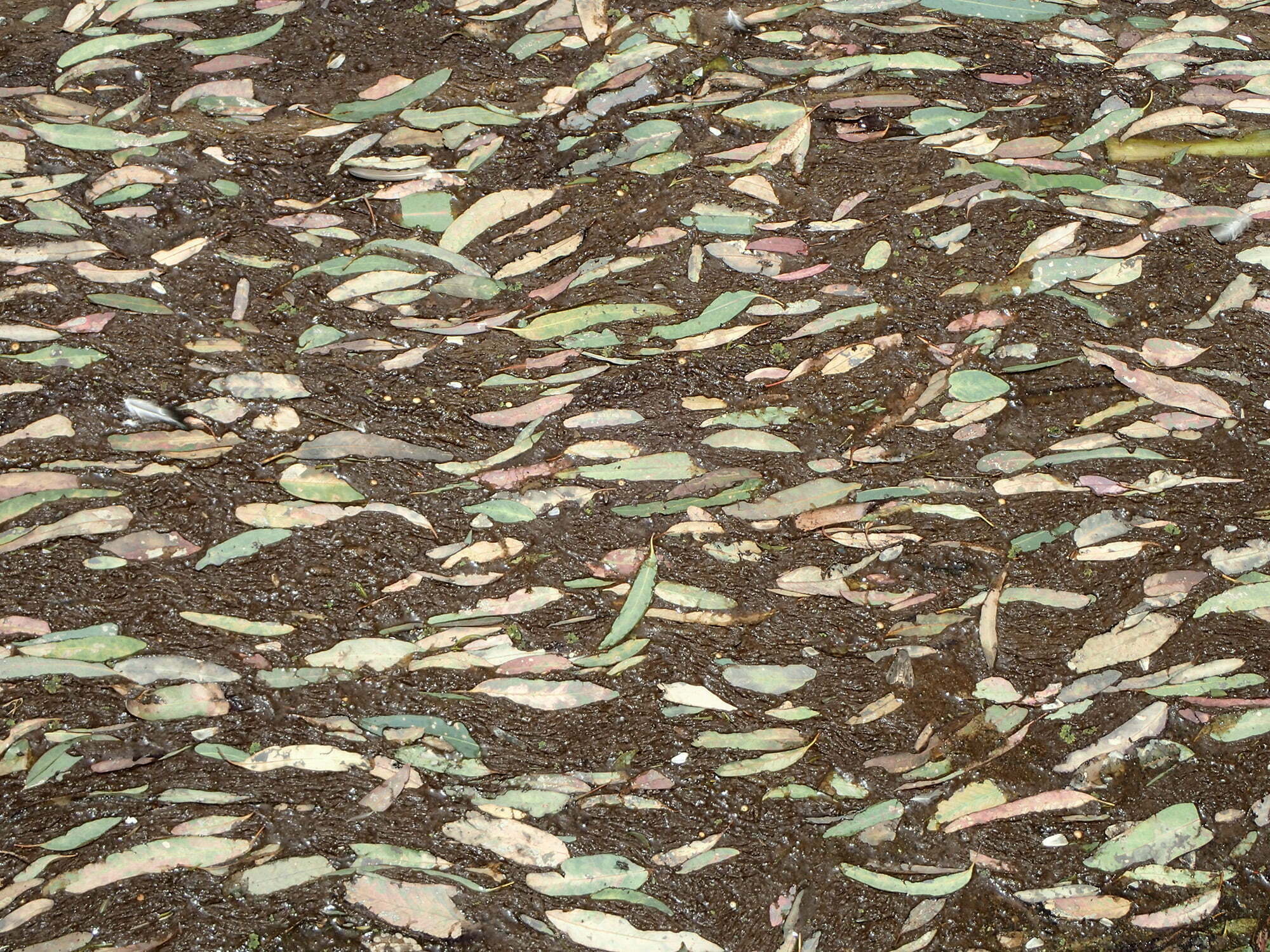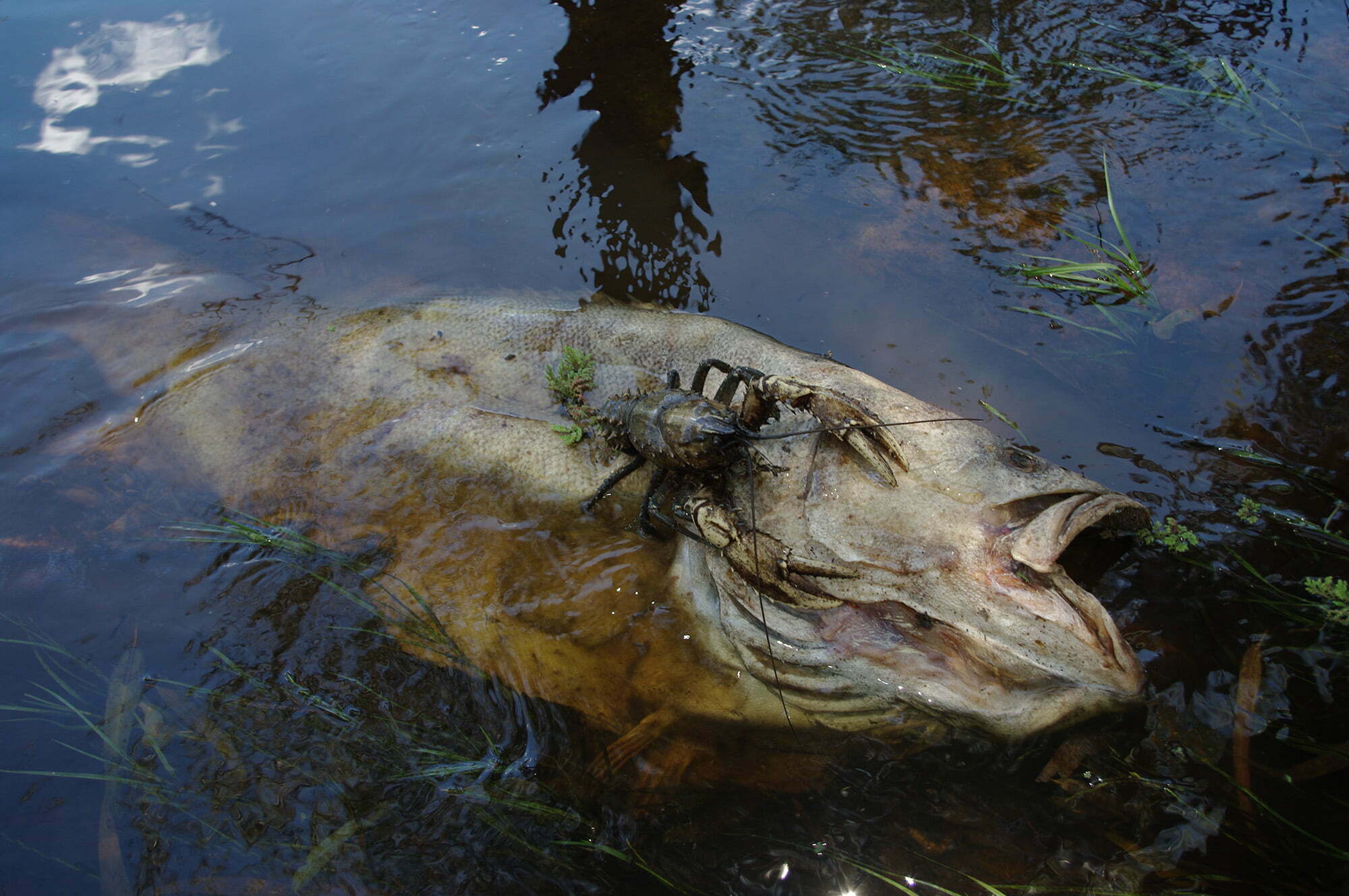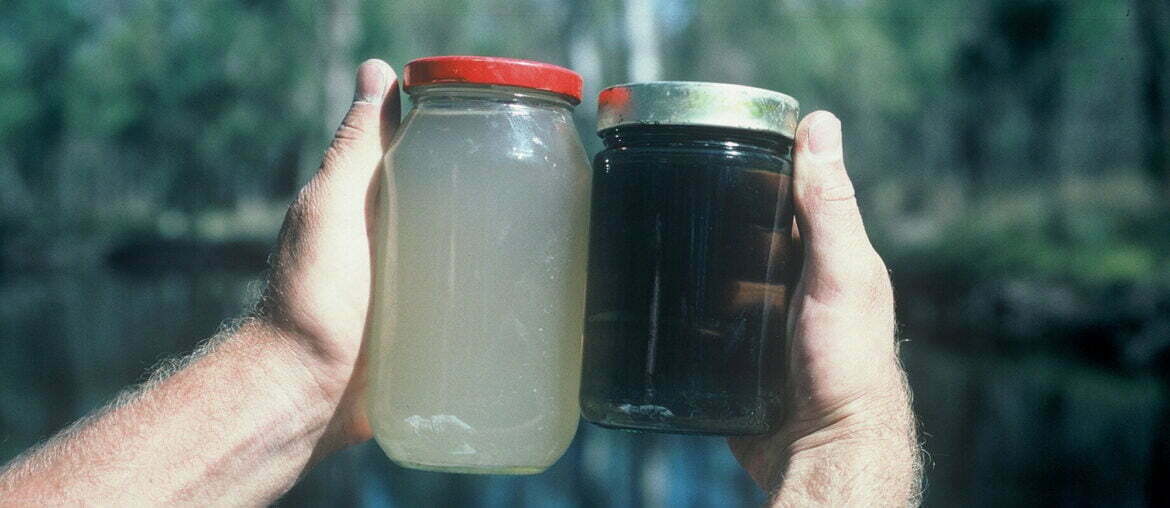WARNING: Graphic photo included below.
We have all seen the awful photos of black sludgy water and dead fish that show the impacts of what is known as a ‘blackwater event’. We wanted to understand why and how blackwater events occur, and what we might be able to do to help.
Wetting and drying cycles
Australia’s river-floodplain ecosystems are adapted to cycles of wetting and drying. These cycles are driven by stream inflow and the flooding of adjacent land which is, in turn, influenced by the climate and water regulation. Wetting and drying cycles determine the two-way transport and exchange of organic and other ‘matter’ (including seeds and young life stages of animals) back and forth between the river channel and the floodplain. During overbank flows, matter from the channel is transported to the floodplain where it is ‘transformed’ – broken down and stored. This contributes to the productivity of wetlands.
Build-up of floodplain litter
The floodplain is characterised by various zones of vegetation, ranging from the emergent plants of the riparian zone at the river’s edge (reeds and sedges), through to bushes such as Lignum, and larger trees further afield, like River red gum and Black box. Litter from leaves, woody debris and organic matter from this vegetation builds up on the floodplain. This is an important source of nutrients and biota back into the river channel during times of hydrological connection. However, the longer the dry period between wetting events (i.e. the dry spell), the more the build-up of floodplain litter occurs.

Blackwater events
Blackwater is the term given to river waters that appear black or dark brown due to high levels of dissolved organic carbon (DOC). The DOC comes mainly from leaf and woody debris from the floodplain. This is an important source of carbon, which enters the food web increasing zooplankton and macro-invertebrates which are, in turn, eaten by fish. However, severe drought, combined with increased duration between flood events, can lead to extreme build-up of the floodplain litter load. In such cases, when big floods occur, large loads of litter are washed into the river channel – leading to a ‘blackwater event’. Flooding after a severe bushfire can also lead to blackwater events, as slugs of burnt woody debris, ash and soil are washed into waterways.
Impacts of blackwater events result from naturally occurring bacteria rapidly consuming the sudden windfall of nutrients including DOC. The increased microbial activity can lead to hypoxic conditions (reduced or zero dissolved oxygen in the water), as the oxygen is used up faster than it can be replaced.
What happens to fish?
Blackwater events can happen suddenly, sometimes within hours, but their impacts can last from days to months. Fish and other aquatic animals may try to escape, but the speed and size of the event, and the presence of barriers (like weirs and dams) can prevent this. The reduced oxygen levels caused by a blackwater event can lead to the suffocation of fish. It may also lead to the emergence, and often mortality, of crustaceans such as yabbies and crayfish. At times, high levels of polyphenols, the chemicals in River red gum leaves, can also be toxic to fish. Blackwater events may result in mass fish deaths, such as those which occurred in 2010-11 at the end of the Millennium Drought (1800 km of the River Murray) and in the Southern Basin in 2016 – the wettest year on record for the Murray-Darling Basin.


What can we do?
Historically, there has been an increase in the number of blackwater events in Australia, particularly over the past thirty years. Blackwater events are natural events, but they are influenced by a number of factors, including: water temperature (worse when warmer); types of vegetation; the load of floodplain litter (including any extra carbon from nearby agricultural lands); the frequency, duration and area of inundation (flooding on floodplain); levels of water extraction; and the ability of river channel flow to dilute the blackwater. Only some of these factors can be controlled, although many can be factored into water management decisions and manipulated by river operations. For example, smaller and regular watering of floodplains reduces the load of litter build-up.
Planning the release of the right amount of water at exactly the right time and place can be difficult, and sometimes there is no stored water available. Under Basin Plan implementation, the Commonwealth Environmental Water Holder works with Basin State and Territory governments to develop strategies to try and reduce the negative impacts of blackwater events. Given our changing climate, many of the factors outlined above that contribute to blackwater events are exacerbated. To address these problems government, local community groups and private landholders are using an adaptive management approach to implement strategies to help rivers, wetlands and the fish and other organisms impacted by blackwater. The Native Fish Recovery Strategy has further information on some of the work underway to support our native fish.
This video produced by the Goulburn Broken and North Central Catchment Management Authorities is a useful summary.
To find out whether there are current blackwater events in your area, check the MDBA’s water quality risk map by clicking here.
To report mass fish deaths contact:
- New South Wales Fishers Watch hotline: 1800 043 536
- Victoria Environmental Protection Authority pollution hotline: 1300 372 842
- Queensland Department of Environment and Science: 1300 130 372
- South Australia Fishwatch Hotline: 1800 065 522
- Australian Capital Territory Access Canberra: 13 22 81
- The MDBA’s Fish Death Contact Officer is Greg Ringwood on 0428 519 446 and nfrs@mdba.gov.au
For more information, please visit the MDBA Blackwater page here.

Australian scientists share 30 actions we can take to save the Murray-Darling Basin’s native fish
Twelve of Australia’s top fisheries scientists have come together with a summary of 30 priority actions urgently needed to restore MDB native fishes.
All of us who care for native fish can use this summary to support our own efforts – whether it be applying for grants, lobbying policy makers or restoring the habitats in which native fish can thrive.



